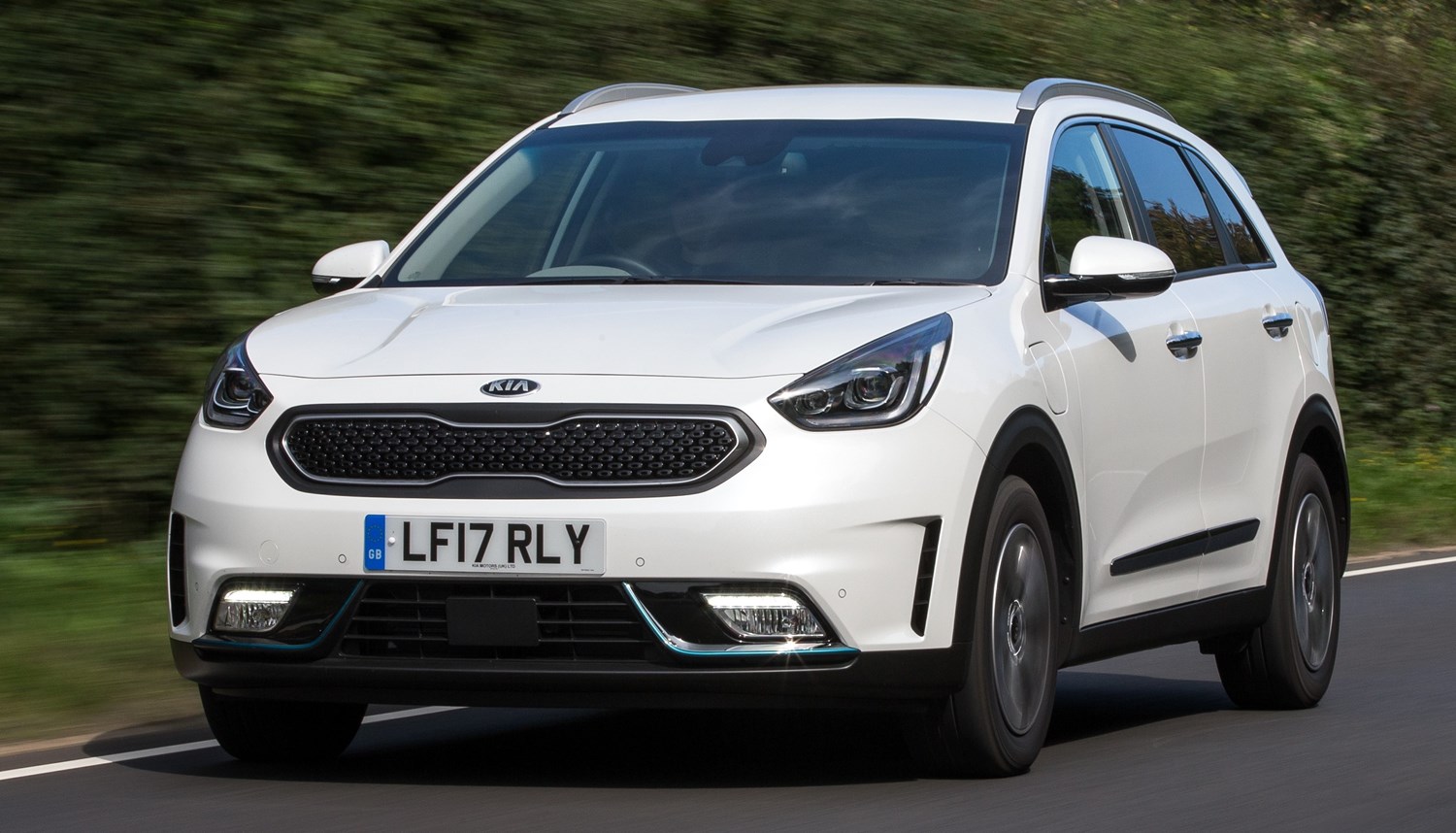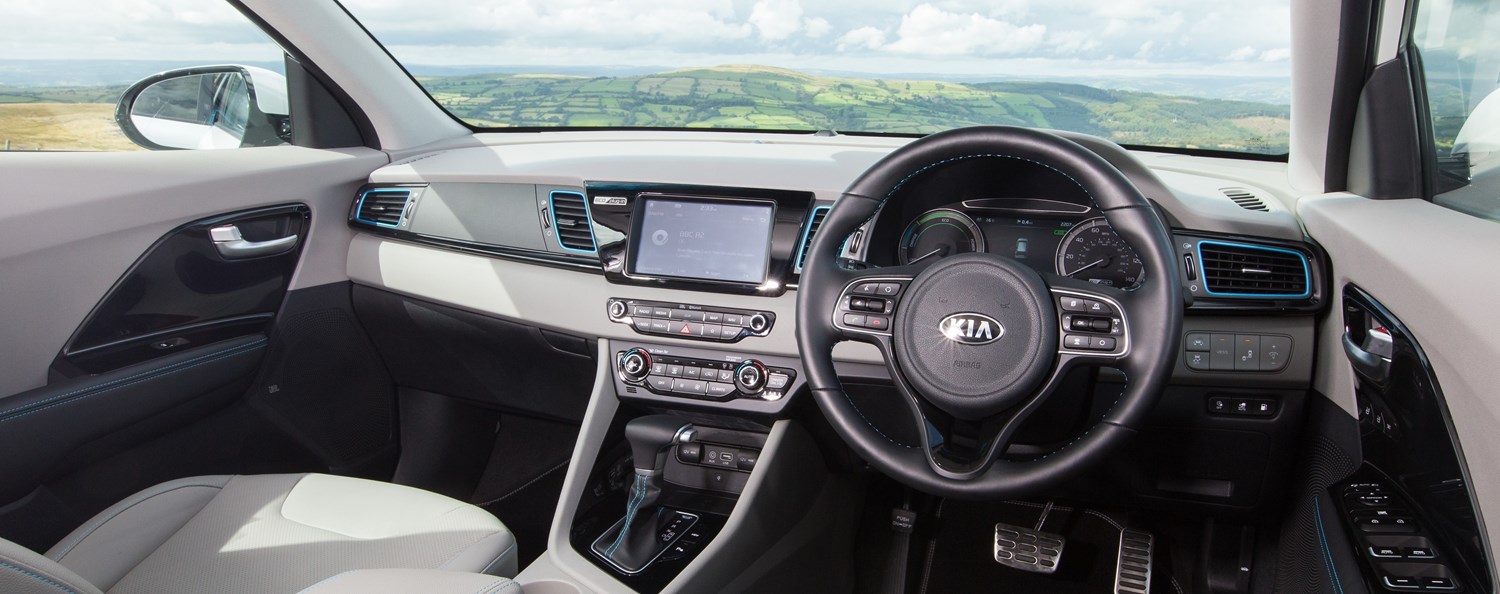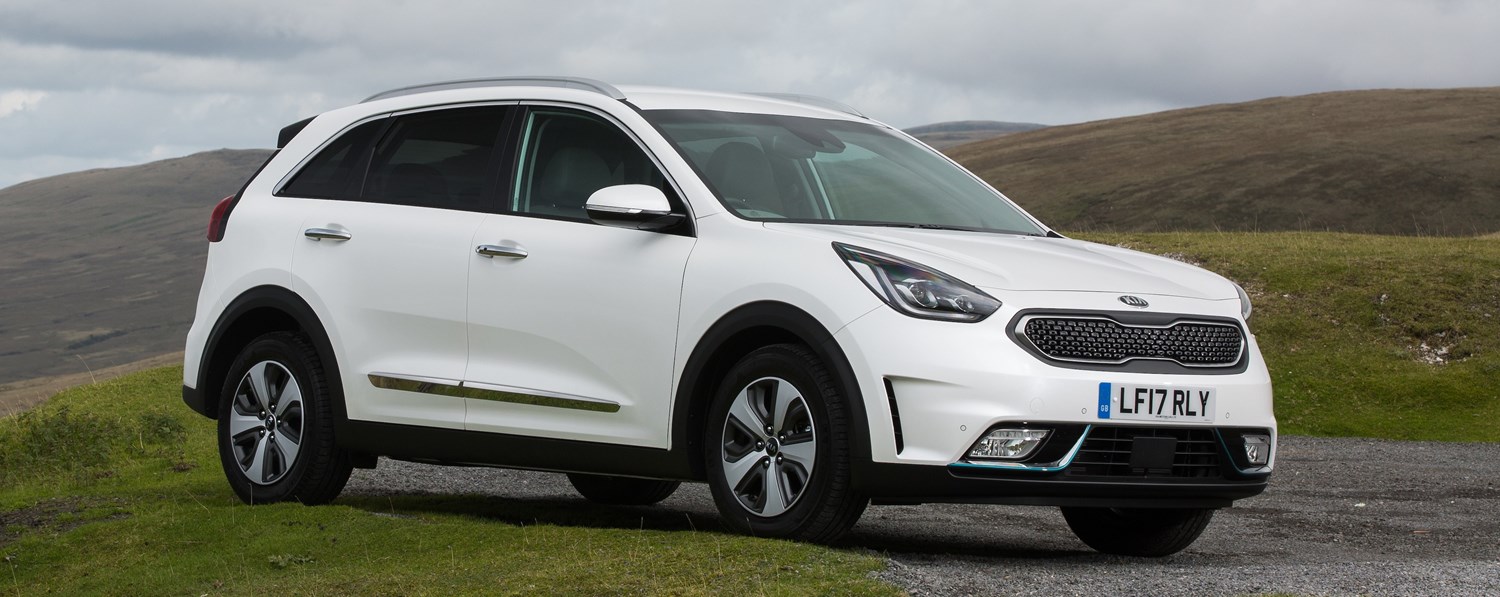Latest model
The latest model to join the Niro line-up is the Plug-in Hybrid Electric Vehicle (PHEV), which hit the market in September 2017.
As it’s a plug-in hybrid, it promises even lower emissions and running costs than the hybrid Niro, with Kia claiming it will return 217.3mpg and CO2 emissions of 29g/km, as well as a 36-mile electric-only range.
A fully electric Niro is also on the way, and was previewed by a thinly-disguised concept at the Consumer Electronics Show in Las Vegas at the start of 2018. The concepts boasts a 238-mile electric range. A toned down production version is expected to be shown in full before the end of 2018.
Value for money
The Niro range starts at £23,155 with the conventional hybrid model, rising to £27,995 for the plug-in hybrid model, including the government’s £2,500 plug-in car grant. All models come reasonably well-equipped, including 16-inch alloy wheels, dual-zone climate control, LED daytime running lights, a seven-inch touchscreen and a reversing camera. You’re definitely better off choosing a higher-spec car if you’re looking for a better trim level, though.
Despite the Niro not even being on sale for a year, there are already considerable discounts to be had. We saw a 2017 car with just 5,000 miles for sale for £17,000, which is already a hefty chunk off the price for a new one.
As the plug-in hybrid has only been on sale for a couple of months, there is even less of these for sale. That said, there are already chunky discounts available on the plug-in hybrid model. We saw a 2017 model for sale for £19,989 with 4,000 miles on the clock. This means that you can already get a sizeable £8,000 off the price off a new one in, even after just a few months. For this reason, it is definitely worth looking on the used market before you consider purchasing a brand new Niro.
Looks and image
The Niro isn’t a particularly inspiring car to look at, as it’s rather more conventional in its design. That was always Kia’s aim, though, as it didn’t want its hybrid car to stand out like other plug-in and electric cars do.
To drive, the Niro definitely favours a relaxed drive rather than a spirited one. There’s largely a smooth and refined transition between electric and petrol power, although on the plug-in hybrid you do seem to get a sudden burst of power when the engine kicks in. There’s also a Sport mode, although it is questionable the difference it actually makes to the way the car performs.
The dual-clutch automatic transmission is a very smooth gearbox to use, though, and is far better to use than the CVT gearboxes fitted to many electric and hybrid cars. The steering feels rather artificial and the low-resistance ‘eco’ tyres don’t exactly provide a lot of feel, but in normal driving it handles without drama.
Ultimately though, the Niro is designed to be a town car so it does begin to feel out of its comfort zone at motorway speeds. The Niro PHEV is a little punchier, with the engine eager to kick in under acceleration. Compared to the rapid Mini Countryman Cooper S E All4, the Niro PHEV does feel slow, though.
Inside, the Niro’s interior feels well-built and largely unchanged to the rest of the Kia range – minus the dials telling the status of the electric powertrain. The dials and central touchscreen look modern as well, although if you are into your tech, it is definitely worth choosing a higher-spec car for the benefit of having a larger touchscreen.





